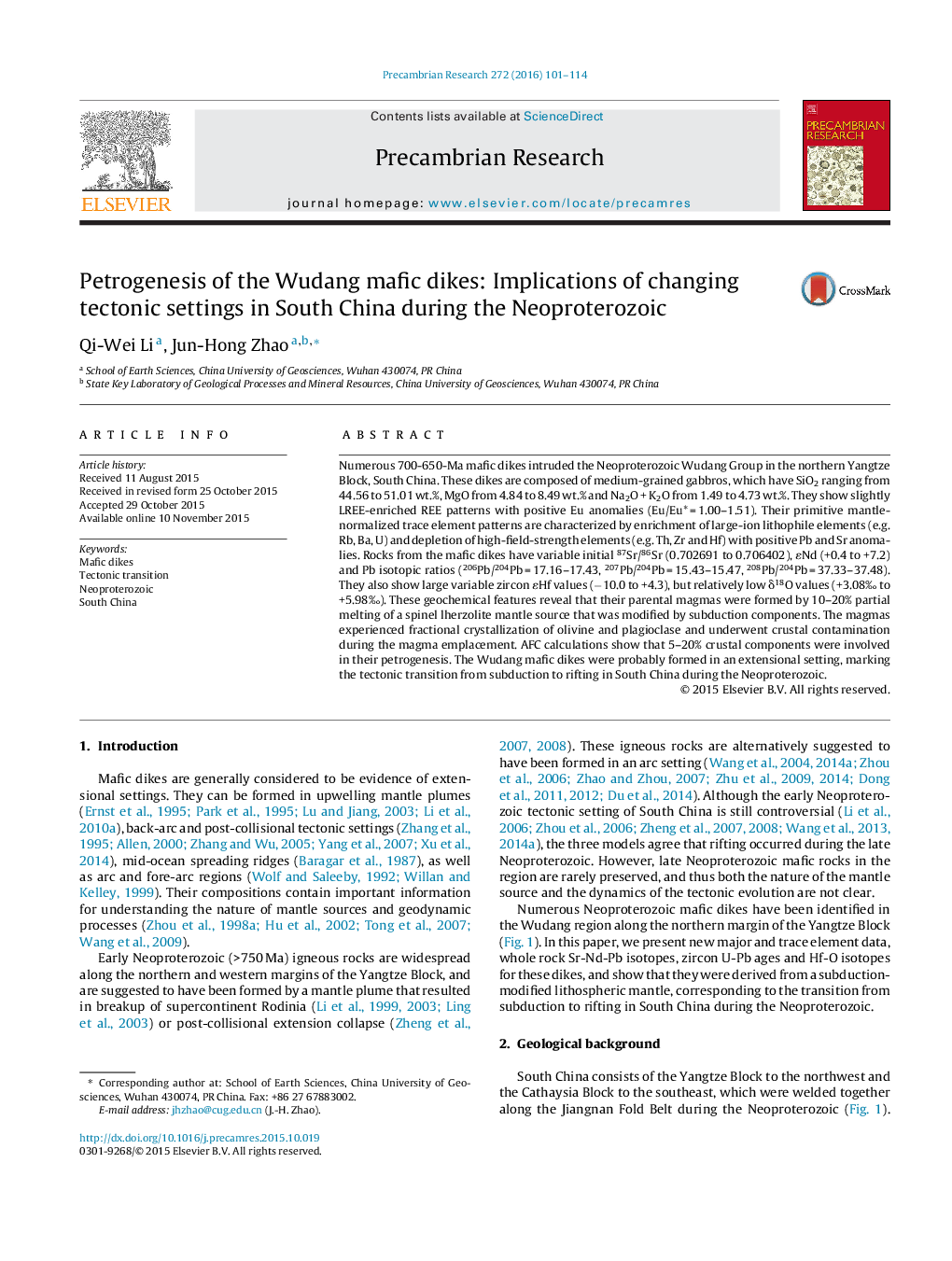| Article ID | Journal | Published Year | Pages | File Type |
|---|---|---|---|---|
| 4722438 | Precambrian Research | 2016 | 14 Pages |
•Ca. 700 Ma Wudang dikes were from a subduction modified mantle source.•Contamination by the lower ancient basement and the upper sedimentary country rocks.•Changing tectonic setting in South China from subduction to rift.
Numerous 700-650-Ma mafic dikes intruded the Neoproterozoic Wudang Group in the northern Yangtze Block, South China. These dikes are composed of medium-grained gabbros, which have SiO2 ranging from 44.56 to 51.01 wt.%, MgO from 4.84 to 8.49 wt.% and Na2O + K2O from 1.49 to 4.73 wt.%. They show slightly LREE-enriched REE patterns with positive Eu anomalies (Eu/Eu* = 1.00–1.51). Their primitive mantle-normalized trace element patterns are characterized by enrichment of large-ion lithophile elements (e.g. Rb, Ba, U) and depletion of high-field-strength elements (e.g. Th, Zr and Hf) with positive Pb and Sr anomalies. Rocks from the mafic dikes have variable initial 87Sr/86Sr (0.702691 to 0.706402), ɛNd (+0.4 to +7.2) and Pb isotopic ratios (206Pb/204Pb = 17.16–17.43, 207Pb/204Pb = 15.43–15.47, 208Pb/204Pb = 37.33–37.48). They also show large variable zircon ɛHf values (−10.0 to +4.3), but relatively low δ18O values (+3.08‰ to +5.98‰). These geochemical features reveal that their parental magmas were formed by 10–20% partial melting of a spinel lherzolite mantle source that was modified by subduction components. The magmas experienced fractional crystallization of olivine and plagioclase and underwent crustal contamination during the magma emplacement. AFC calculations show that 5–20% crustal components were involved in their petrogenesis. The Wudang mafic dikes were probably formed in an extensional setting, marking the tectonic transition from subduction to rifting in South China during the Neoproterozoic.
